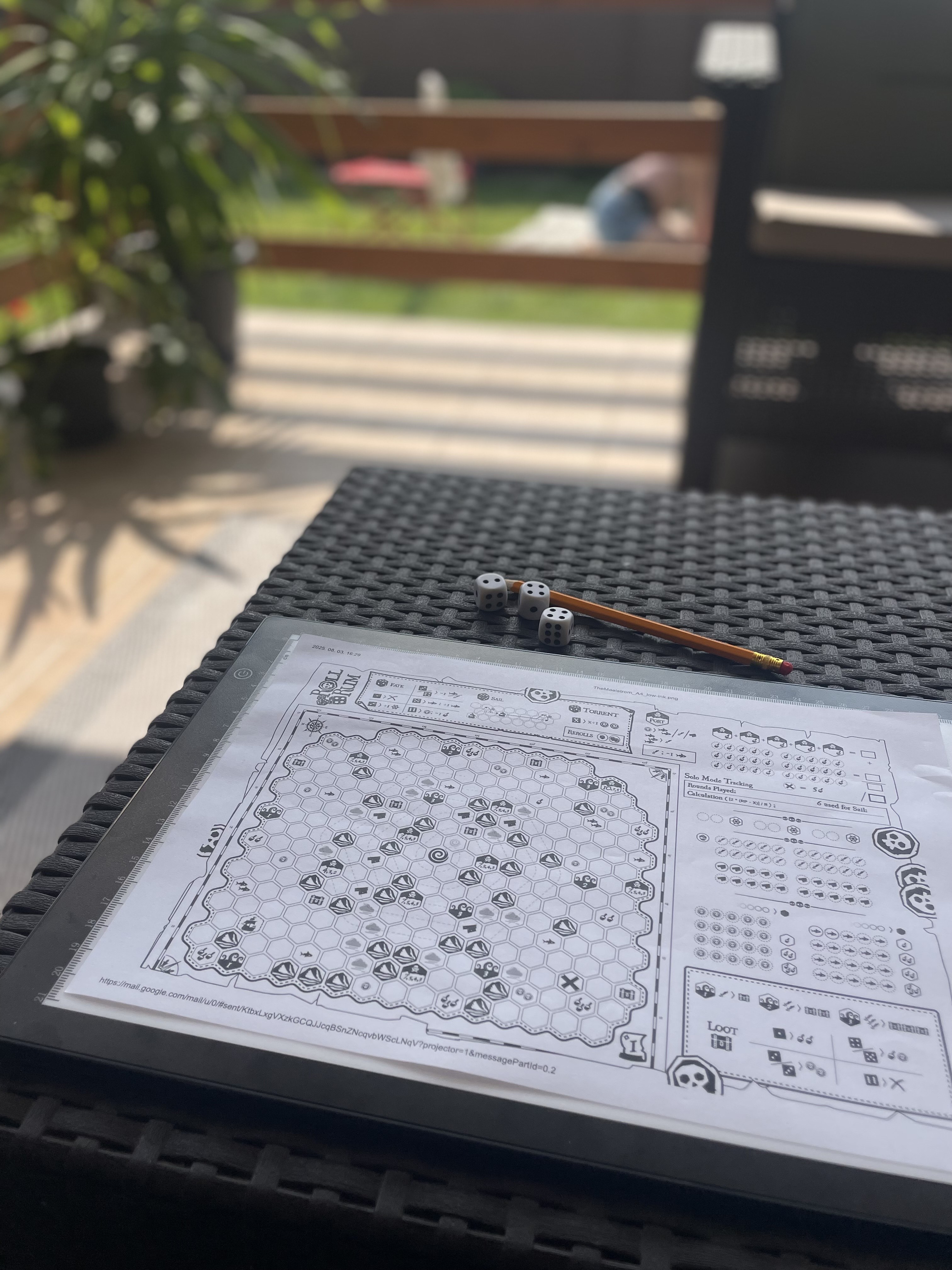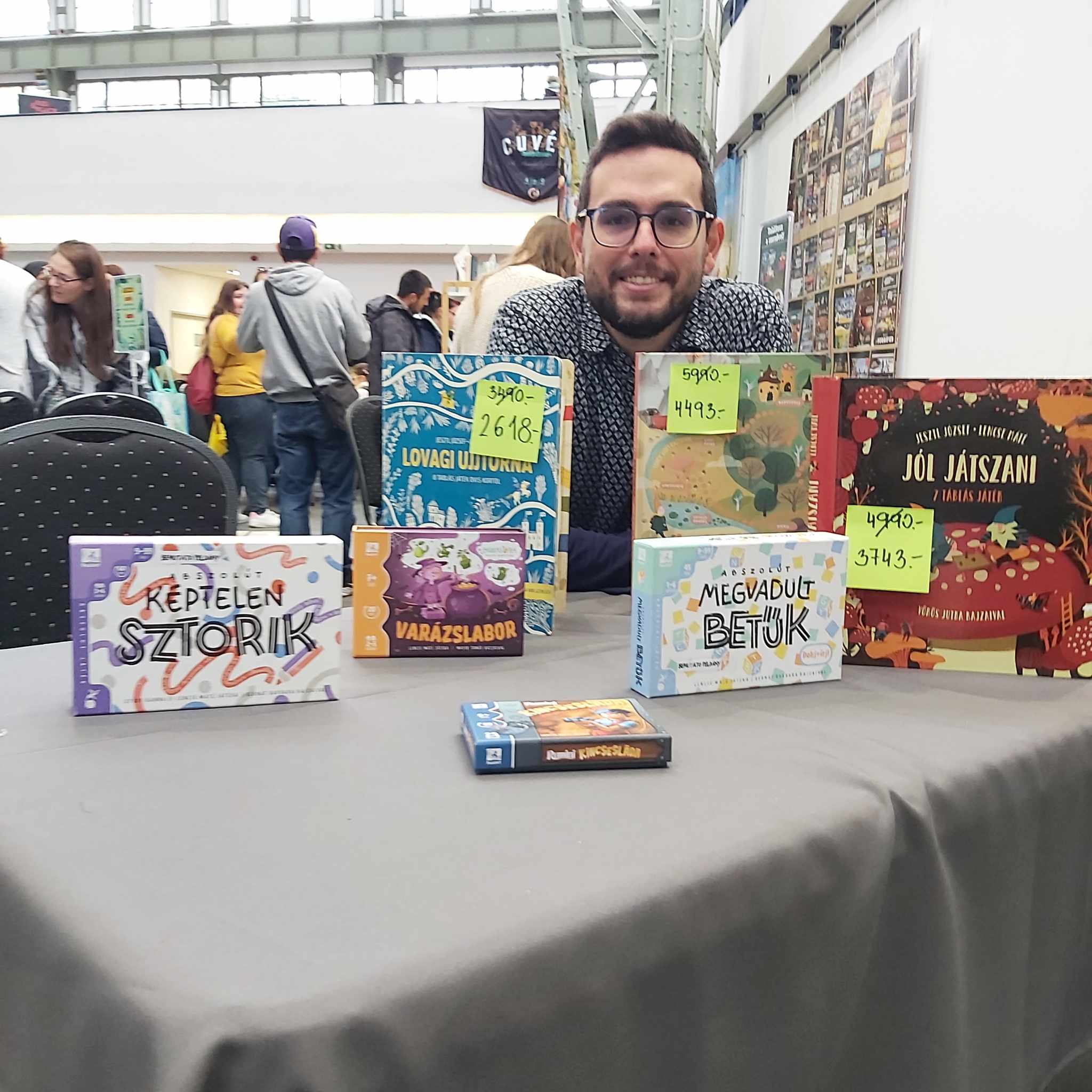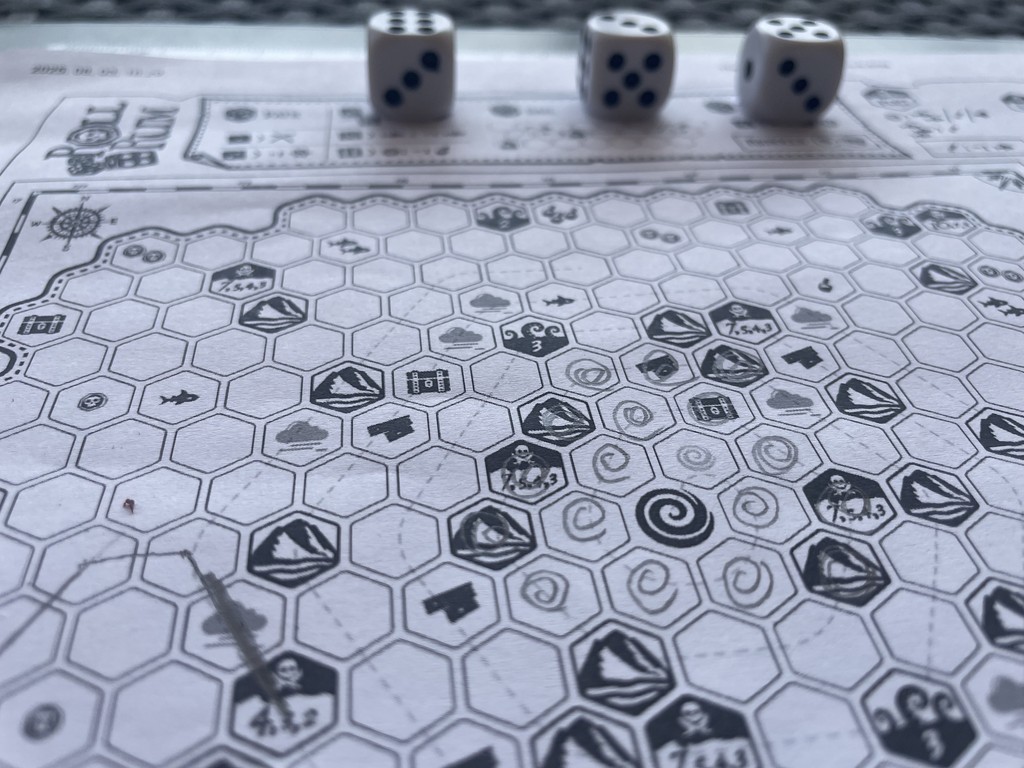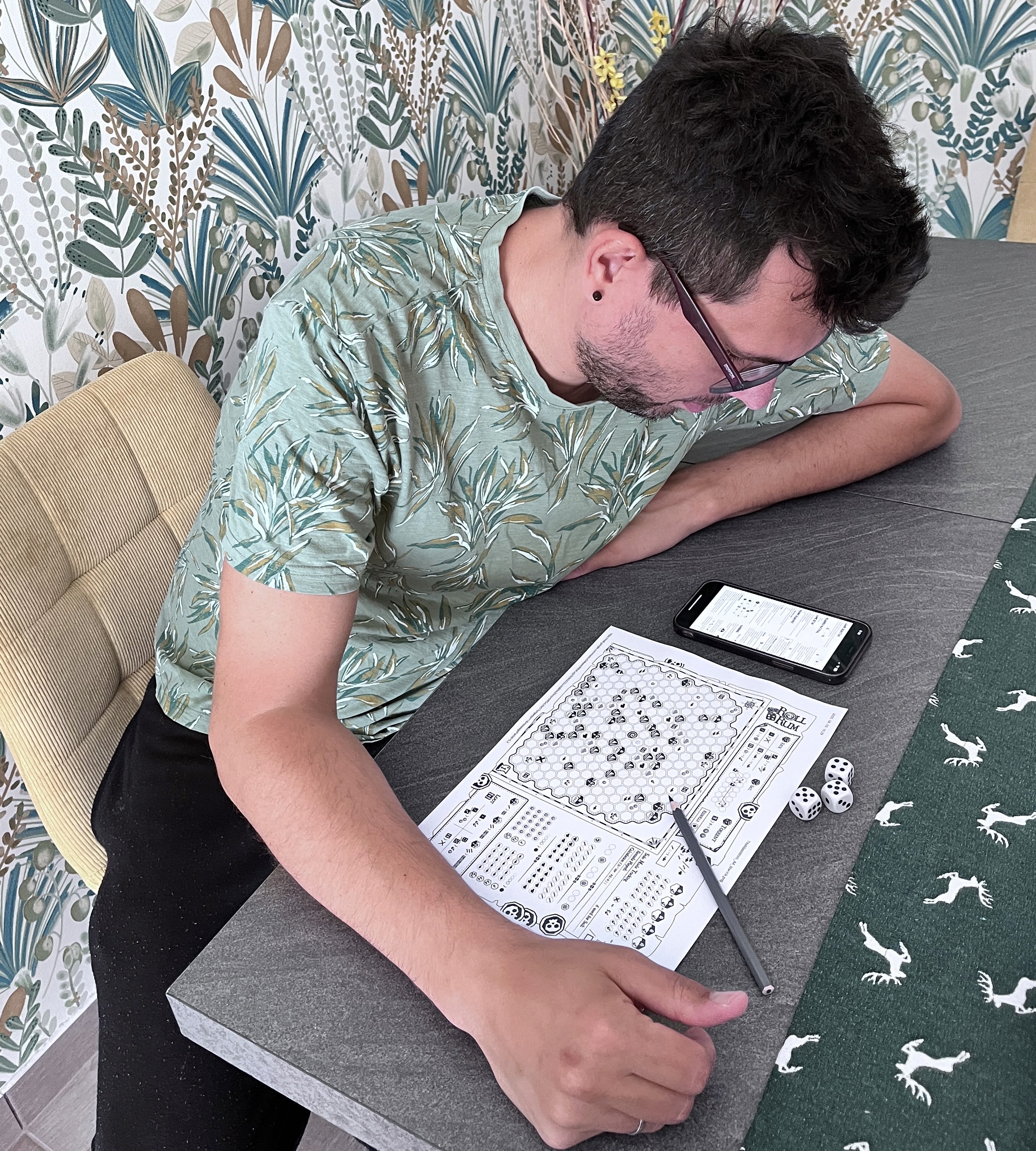Overview
I was just on the hunt for new print and play games when I came across Roll 4 Rum on the Reddit r/printandplay channel. It checked all my boxes: a slightly more complex and longer gameplay, but with simple printing, easy setup, minimal components, and a solo mode.
Roll & write is a natural fit—and one I personally really enjoy—so I was happy to discover Florian Fiedler's game, which I picked up from the PNP Arcade website.
Game Information
- Designer: Florian Fiedler
- Year: 2024
- Players: 1-4 (excellent solo)
- Type: Roll & write
- Theme: Pirate adventure
- Components: Map, 3 dice, pen
Key Features
- • True print & play design
- • Multiple maps included
- • Rulebook in 5 languages
- • Evolving map with whirlpool
- • Perfect for solo play
- • Educational value for kids


That said, it's still important to me that the game is truly print and play—I don't want to need a full print shop or go hunting for extra components just to get started.
Roll 4 Rum meets all of these expectations perfectly.
Review
Print and play
The package I received by email after purchase was flawless. When you see that all you need to print is a simple map, you don't expect much—and honestly, I'd have been satisfied even if that were all.
But instead, you get multiple maps, various print options, and the rulebook in five languages. After a bit of browsing and thinking things through, you realize you're just a simple print job and the retrieval of three dice and a pen away from playing. And that's fantastic!
Gameplay
The adventuring, pirate-themed setting of the game comes through just as much as you'd expect from a minimalist design—and that's a good thing. The mechanics are simple, but there are some clever touches.
Placing the three dice each round really gives your brain a workout: something might be an obvious fit for one action, but then what's left for the others? A tempting decision in one spot can put you in a tight corner elsewhere. Sometimes the best move is a compromise—but that's not always easy to make, especially when you're a pirate, after all.
The way the map evolves, and how the whirlpool spreads, doesn't seem like a big deal at first, but around rounds 8–10, you start to regret those early reckless choices. Luck and tactics coexist nicely here, and I really enjoy that kind of dynamic.
It doesn't go too deep strategically—there aren't cascading effects or tightly linked upgrades—but that's not a flaw, just a limit of scope. I still found it easy to get immersed.
Sure, some people might be bothered by the strong role of luck—but that's often the case with dice games. And as someone who works with children, I always point out how learning to deal with luck, and the way it can level the playing field, can actually be quite valuable from an educational perspective. I'd gladly print this game out for cool kids who like to play and think.

Solo Mode
I really like that the game includes the solo scoring system directly on the map—it highlights that solo play isn't just a trendy add-on, but something the designer genuinely considered. They clearly thought about how it could work alone, how to calculate your score, and how to compare it.
That said, I would have appreciated some kind of reference scale—something to help place my score along a performance spectrum.
Interestingly, I found that the rulebook seems to support the solo mode much more clearly than the multiplayer version. The explanation of the dice selection mechanic for multiple players feels a bit vague. I have an idea of how we *could* play it in a group, but I'm not entirely sure if that's how the designer intended it.
In any case, I've only played it solo so far, and most of my plans for this game are focused on solo play—so for now, that's not a problem.
Illustrations
I printed it in black and white, but I might end up making a laminated, color version too—just to see how well the marker + lamination combo works.
I think the map looks cool, the icons are clear, and the marking system is straightforward and easy to use. To me, this feels like a solid, well-crafted piece of work that clearly acknowledges the fact that it's a functional item. The design never gets in the way of usability—and I really appreciate that.
Overall Impression
This was exactly what I was looking for—and it felt great to find it. Even after my first impressions, I confidently printed five maps, already sensing I wouldn't be tossing them after a single play.
I have a strong feeling that Roll 4 Rum will become a regular in my PnP collection. I'll gladly teach it to kids, too—it packs in plenty of challenge, but it plays quickly and stays entertaining. And there's just the right amount of frustration in it to keep things interesting—which, in my book, is always a good thing.

Reviews
Quality gaming sessions are also accessible with print and play games.
I'll check out the other reviews.